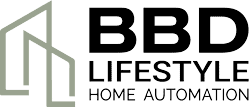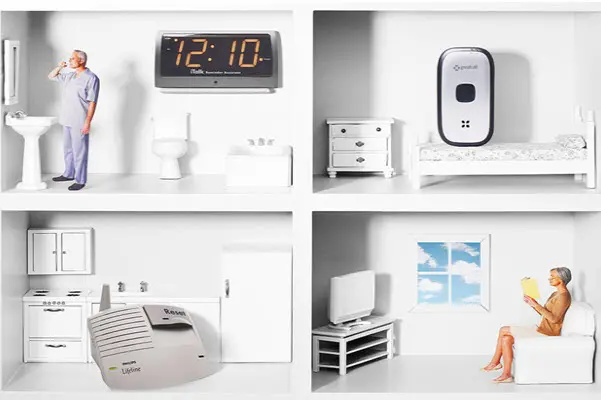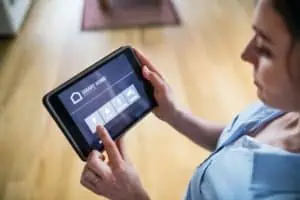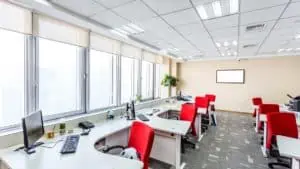Right off the bat, I want to state that I am NOT saying that home automation, or technology in general, can take over for nursing visits, medical care, and basic human interaction and socialization. What I would like to discuss, is how home automation and technology can help make the difficult job of caring for an elderly loved one a little easier.
There is a statistic being mentioned regularly on news stories on the topic that 10,000 people a day will turn 65 for the next 19 years. It’s always hard to quantify these sort of figures, but think of a good-sized small town, or maybe about 1/4 of a professional football stadium or baseball parks capacity. None of these numbers really matter anyway, not as much as the most important number does. That would be #1 (as in just looking out for). Most people have an elderly parent or grandparent who has required special assistance as they get older. According to the number above, if you don’t have one of these people in your life now, you soon will.
Most people would look at a home automation system and think that it is beyond their technological abilities. When I put my first component, a dead-bolt, into my home system, I had set aside a whole day to wrestle and fight with it. Five minutes after starting I was done, and speechless at how easy it was to interface the deadbolt into the system!
The beauty of home automation is that it can grow and expand as your schedule and budget allow.
Most home automation systems require a controller (which can often double as a WiFi access point) and an internet connection if you desire remote access. Other than the cost of your internet connection, there should be no recurring cost to your own home automation system. While many companies are charging monthly service fees to provide home automation, this really is not necessary for most homes. Most components mentioned in this article are under $100, usually about $50-$75. The most expensive items in this article are about $250. When considering the costs of major home systems such as electrical, plumbing, and HVAC, these are very minor costs, more on par with home decor than that of infrastructure!
Many senior citizens can embrace their golden years with full capability, not even skipping a beat in their mental and physical abilities between their earlier years and their current life. Many others, however, need some help with things they didn’t use to need help with. The following is a list of some common issues senior citizens have, along with some suggestions on how home automation and other technologies can help.
Forgetfulness:
I often hear people say things like ‘I can’t remember what I was doing 5 minutes ago’ or ‘I can’t even remember what I did yesterday.’ Unfortunately, I don’t have any advice for this, since I am in the same boat! What I can suggest is help for more acute situations of memory loss. Situations where a senior citizen turns on a stove, or coffee pot, and forgets to turn it off. There are home automation products that will allow you to automatically kill a circuit after power has been drawn through it for a certain period. These can also be set up within a system to send an alert or alarm, depending on your preference. Are there certain things that need to happen every day that are being forgotten, such as taking medication? You can put a door sensor on the medicine cabinet and set up your system so that a reminder message will appear on the homes status screen, or even a reminder message of ’12 PM, it is time for medication’ to be played throughout the house. If the sensor on the cabinet does not sense that the door has been opened after some time, it can send a message to out to let someone else know that the medicine has not been taken. There are home automation door locks and deadbolts that can provide status checks and be controlled remotely. Previously mentioned sensors can be placed on windows to know when they are open or closed. Products such as these can provide an extra set of eyes on the vulnerable security areas of a senior home without actually being there.
Fading Senses:
It is a fact of life that as we age, our senses start to go. Depending on what issues your loved one is having, there is an easy, inexpensive solution to help work around it within the home. Eyesight going? Connecting sensors to doors (other than door-bells of course), windows, and other areas can help let them know when something is left open, or generally not how it should be. Hearing going? Strobe lights, LED’s, and status messages can be displayed at a central location or throughout the house when something is not right. Smell going? Carbon Monoxide/Dioxide and smoke detectors are all available to interface with home automation systems. In addition to the standard alarm siren, these can be set up to trigger other actions like the strobe lights and status messages mentioned above, as well as sending emergency messages and calls to people outside the house.
Falling:
The number one cause of senior injury in the home is caused by falling. Of course, the first thing most people think of when this is brought up is the now iconic ‘I’ve fallen, and I can’t get up’ commercials from the late ’80s. While these commercials were lampooned for their cheesy acting, the subject matter is of a very real issue. The same basic idea of being able to call for help is the best of some very limited options in these situations. There are now devices available that will call within the house if the senior citizen is living with someone else. Some devices will call or text message through phone lines. And of course, there are options available that will call 911. All of these options have their place, are inexpensive, and can even be had without paying any subscription costs! The other home automation technology that can help avoid falling accidents is having lights triggered by motion sensors. People of all ages are subject to having an accident while fumbling around blindly in the dark, and senior citizens are no exception. By having lights come on automatically when motion is detected, this risk is eliminated.
Home Maintenance:
Often seniors home can fall out of repair over time. Basements are particularly prone to this since there is usually not a common living area in a basement that is used daily by empty-nesters. Add the physical strain and the possibility of falling on the stairs, and you have a basement that won’t see much action. Products such as water sensors that can send an alert when there is pooling water can provide a very inexpensive insurance plan for what could turn into a very expensive repair. Previously mentioned carbon monoxide, carbon dioxide, and smoke detectors can all be of great value monitoring a seldom-used basement. As mentioned before, these alarms can all be set to send alerts, trigger alarms, or trigger other actions to notify people of the issue.
Utility Monitoring:
Seniors are often more sensitive to extreme temperatures. Networkable Thermostats provide real-time monitoring of the temperature setting of a home. This can be extremely useful to make sure a seniors home is kept within an ideal temperature range. These thermostats can be programmed to turn on the heat or AC automatically when a certain temperature is reached. As bonus savings, programmable thermostats can be set to follow a daily schedule to allow the temperature to fluctuate to one’s preferences during the day. Thermostats can be controlled remotely and be set up to send alerts or alarms when a temperature is reached, or the settings are changed. Electrical monitoring products offer remote monitoring of the devices pulling current through them, as well as control of turning the device on and off. This can be useful in keeping an eye on certain devices that can be dangerous if left on or unattended.
Cameras:
It is an unfortunate reality that senior citizens are often targeted as easy prey by those looking to take advantage of someone, whatever their misguided reasons may be. Placing security cameras outside the house with a clear view of doors and windows can prove to be very helpful in providing a safe way to monitor a home. These cameras can be set up to record and be viewed in real-time. As for cameras inside the house, these can prove to be very useful as well. I want to make my point perfectly clear that many good people provide vital services for the elderly, but there are some people who would take advantage of their position of trust. While cameras in the home can provide security when a senior is at their most vulnerable, there are also matters of trust and privacy to consider and discuss.
As I’ve referenced throughout the article, a home automation system can be accessed and monitored remotely. This can be done using an internet capable device such as a computer, a smartphone (iPhone, Android, Blackberry and Windows Phone) or tablet. Computer access and smartphone apps allow you to check the status of each component, control the components, and even view the cameras from anywhere!
All of these components can be linked together as necessary to create what are called ‘macros.’ For example, maybe you have a camera facing the front door that comes on whenever the door is unlocked. Maybe whenever a light sensor detects that it is nighttime, the doors lock and the lights come on; outdoor lights all night and living room lights until 10 PM/bedtime (with motion detection on/off). Any windows that are sensed as ‘open’ send an alert to the message center to make sure they are closed. Any windows not closed by bedtime send a text alert to the seniors caretaker (you). Curtains are drawn using a motor connected to the curtain drawstring. These are just a few examples of how macros can be bundled together to create multi-process actions to handle a process automatically. The only limit to these processes is your needs and imagination!





